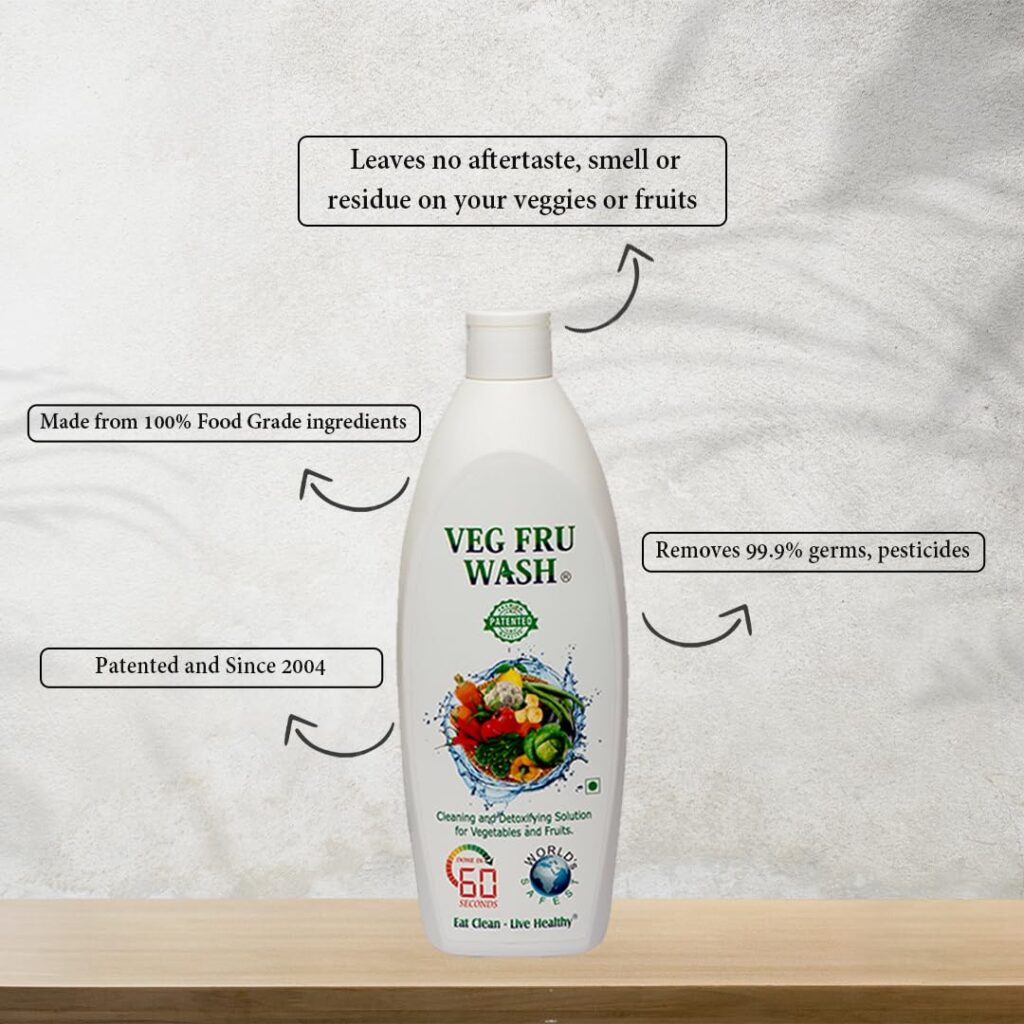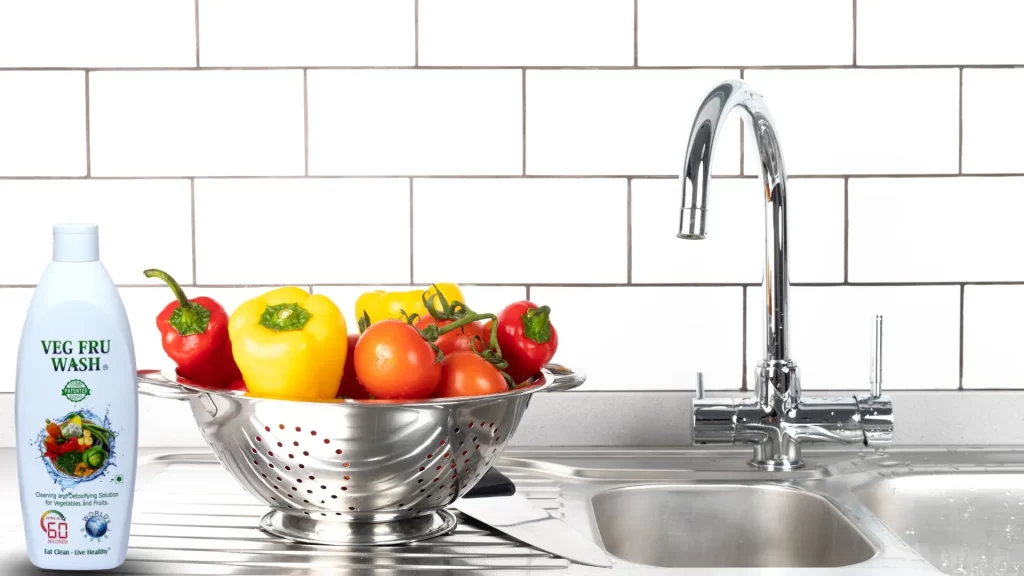
Incorporating a variety of vegetables into your diet is essential for maintaining good health. However, to ensure that these vegetables are safe to eat, they must be properly cleaned. A vegetable cleaner is a crucial tool in this process, designed to remove harmful residues and contaminants from your produce. This blog will guide you through the process of choosing the right vegetable cleaner, how to use it effectively, and the health benefits it offers.
Why a Vegetable Cleaner is Necessary
- Pesticide Removal: Pesticides are used extensively in agriculture to protect crops. These chemicals can leave residues on the vegetables, which can be harmful if ingested. A vegetable cleaner helps to effectively break down and remove these pesticide residues.
- Bacterial Elimination: Vegetables can be contaminated with harmful bacteria like E. coli and Salmonella during harvesting, transportation, and storage. Using a vegetable cleaner helps eliminate these pathogens, reducing the risk of foodborne illnesses.
- Dirt and Debris Removal: Vegetables often carry dirt, sand, and other debris from the field. A vegetable cleaner aids in thoroughly removing these contaminants, ensuring that your produce is clean and safe to eat.
Benefits of Using a Vegetable Cleaner
- Enhanced Cleaning Power: Compared to rinsing with water alone, a vegetable cleaner is specifically formulated to penetrate and remove a wider range of contaminants, including pesticides, bacteria, wax, and dirt.
- Better Taste and Texture: Clean vegetables not only taste better but also have a more appealing texture. By removing contaminants, a vegetable cleaner helps you fully enjoy the natural flavors of your produce.
- Health Assurance: Knowing that your vegetables are thoroughly cleaned provides peace of mind. You can feel confident that you are minimizing the risk of exposure to harmful substances and providing safe, nutritious food for your family.
How to Choose the Right Vegetable Cleaner
- Natural Ingredients: Look for a vegetable cleaner that is made from natural, non-toxic ingredients. Avoid products with harsh chemicals, as these can leave harmful residues on your produce.
- Effectiveness: Choose a cleaner that has been tested and proven to effectively remove pesticides, bacteria, and other contaminants. Check for third-party certifications or endorsements.
- Ease of Use: Select a cleaner that is easy to use, whether it’s a spray, soak, or rinse. The more convenient it is to use, the more likely you are to incorporate it into your routine.
- Environmental Impact: Consider a cleaner that is environmentally friendly and biodegradable. This ensures that you are not contributing to environmental pollution.
How to Use a Vegetable Cleaner Effectively
- Read the Instructions: Each vegetable cleaner may have specific instructions for use. Follow the guidelines provided by the manufacturer to ensure optimal results.
- Dilute as Directed: If the cleaner needs to be diluted, use the recommended amount of water. Using too much or too little can affect the effectiveness of the cleaner.
- Soak and Scrub: For vegetables with tough skins, such as potatoes and carrots, soak them in the cleaner solution for a few minutes and then scrub with a vegetable brush. This helps remove stubborn dirt and contaminants.
- Rinse Thoroughly: After using the cleaner, rinse the vegetables thoroughly under cold running water. This helps remove any remaining residues from the cleaner itself.
- Dry Properly: After washing and rinsing, dry your vegetables with a clean cloth or paper towel. This step helps remove any lingering bacteria and reduces moisture that can promote bacterial growth during storage.
Specific Tips for Different Types of Vegetables
- Leafy Greens: Separate the leaves and rinse them individually after soaking in the cleaner solution. This ensures that all parts of the greens are thoroughly cleaned.
- Root Vegetables: Scrub root vegetables like beets, carrots, and potatoes with a brush after soaking. This helps remove embedded dirt and contaminants effectively.
- Cruciferous Vegetables: Soak vegetables like broccoli and cauliflower in the cleaner solution to remove dirt and insects hiding in the crevices. Rinse thoroughly afterward.
- Herbs: Fresh herbs can also carry dirt and bacteria. Rinse them under cold running water after soaking in the cleaner solution and pat them dry with a clean cloth or paper towel.
Additional Considerations
- Organic Vegetables: Even organic vegetables can benefit from a thorough wash to remove dirt, bacteria, and any residual organic pesticides.
- Homemade Cleaner Solutions: If you prefer a DIY approach, you can create your own vegetable cleaner solution using natural ingredients such as vinegar, lemon juice, or baking soda. However, be sure to rinse thoroughly to remove any remaining solution.
- Frequency of Washing: Make it a habit to wash all vegetables before consumption, regardless of whether they will be eaten raw or cooked. This ensures maximum cleanliness and safety.
Conclusion
Using a vegetable cleaner is an essential step in ensuring the safety and quality of your produce. By effectively removing pesticides, bacteria, wax, and dirt, you can enjoy cleaner, healthier, and more delicious vegetables. Make it a part of your routine to wash all your vegetables thoroughly, and enjoy the peace of mind that comes with knowing your food is safe and nutritious.
4o

